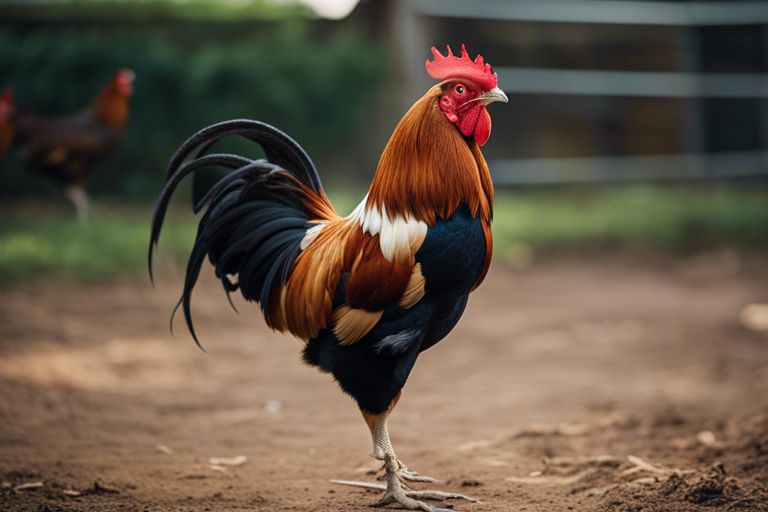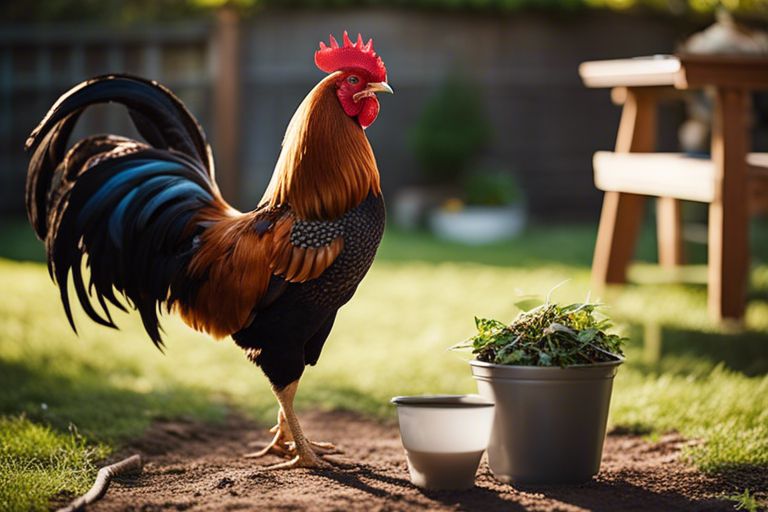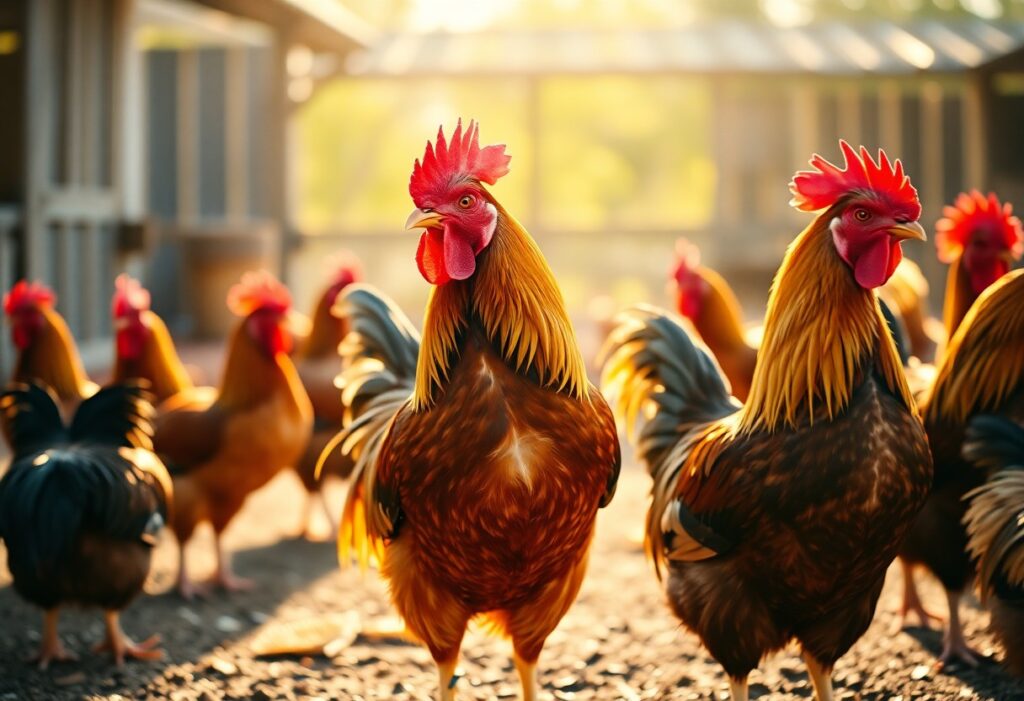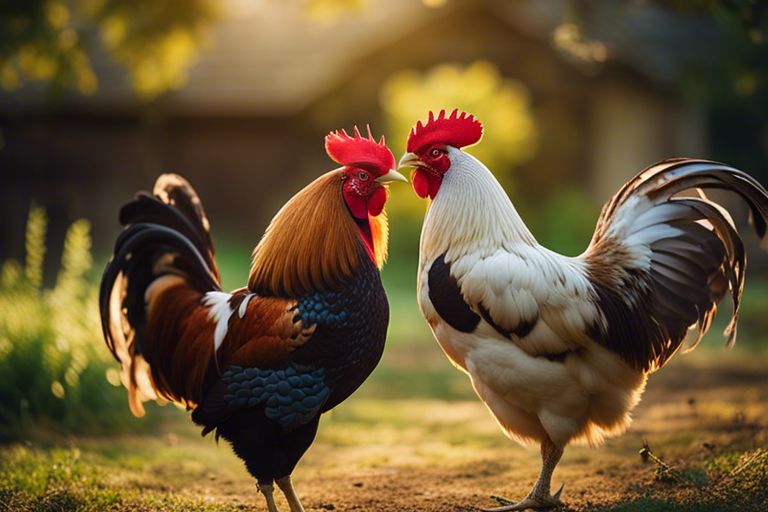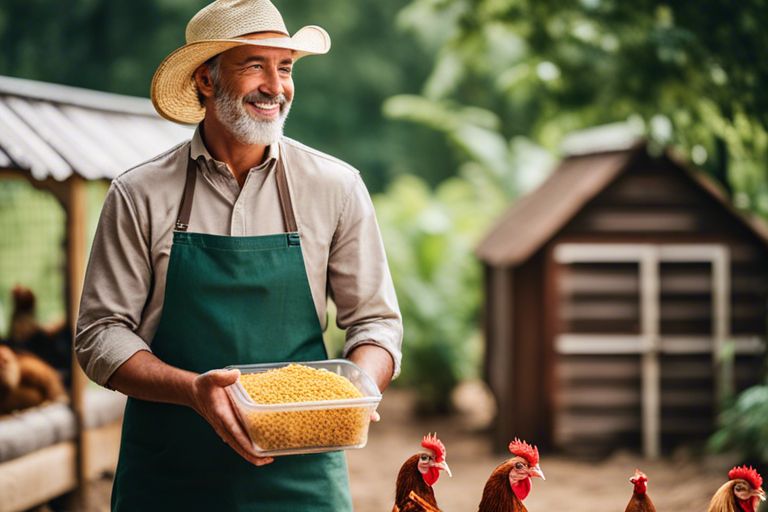You may have noticed that roosters exhibit unique behaviors that can be both fascinating and sometimes bewildering. These majestic birds play a crucial role in the dynamics of a flock, displaying a wide range of actions that communicate their dominance, protectiveness, and overall well-being. Exploring the intricacies of rooster behavior can provide valuable insights into their world, helping you better understand and care for these magnificent creatures.
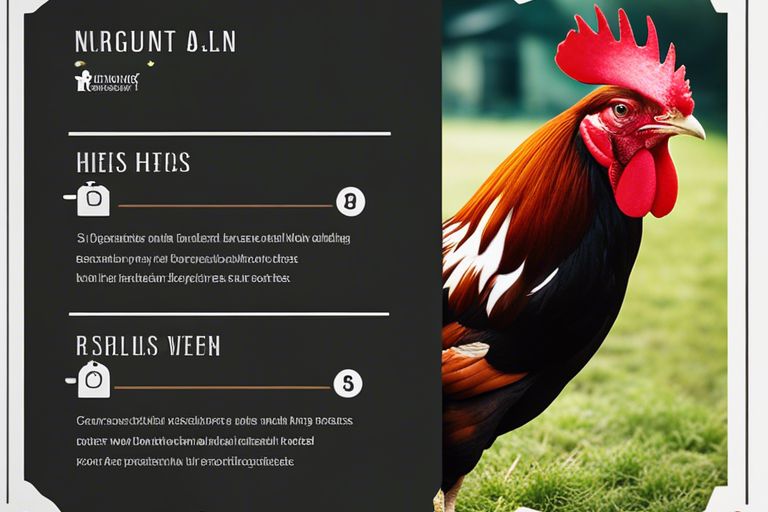
The Social Structure of the Flock
Hierarchical Dynamics
Before delving into the specifics of a rooster’s place within a flock, it is crucial to understand the hierarchical dynamics that govern chicken societies. Chickens, including roosters, naturally establish a pecking order within their flock. This pecking order determines social ranking and access to resources such as food and mating opportunities.
Rooster’s Role Within the Social Hierarchy
The rooster plays a crucial role within the social hierarchy of the flock. Typically, the rooster is positioned at the top of the pecking order, asserting dominance over other chickens, including hens and younger or subordinate roosters. This dominance is often displayed through physical posturing, vocalizations, and occasionally aggressive behavior.
To maintain order within the flock, the rooster must consistently assert its dominance and protect the group from potential threats. Roosters will often engage in displays of dominance, such as crowing loudly, puffing up their chest feathers, and engaging in physical confrontations with lower-ranking chickens. This behavior helps maintain social harmony and ensures that resources are distributed efficiently within the flock.
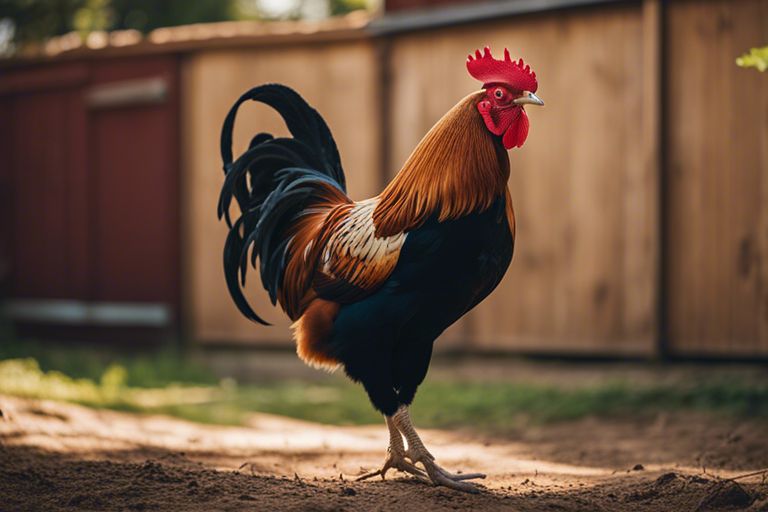
Common Rooster Behaviors and Their Meanings
Crowning
Some of the most common rooster behaviors include crowing, which serves as a way for roosters to establish their territory and communicate with the flock. Crowing is not just about announcing the dawn; it also signifies the rooster’s dominance and confidence within the group.
Mating Rituals and Aggression
To understand rooster behavior, it is necessary to probe into their mating rituals and aggression. Roosters can display aggressive behavior, especially during mating season, when they may become more territorial and protective of their hens. It is important to observe their body language and vocalizations during this time to ensure the safety of the flock.
An in-depth look at rooster mating rituals reveals that these behaviors are deeply ingrained in their natural instincts. Roosters will often perform elaborate dances and vocalizations to attract hens and establish their dominance within the flock. This behavior can sometimes escalate into aggression towards other roosters or even humans, requiring careful monitoring and management by their caretakers.
Handling and Managing Roosters
Training Techniques for Calmer Behavior
To address challenging behavior in roosters, training is key. Start by establishing yourself as the dominant figure through consistent handling and positive reinforcement. Utilize rewards like treats to encourage calmer behavior, and use a firm voice to establish boundaries. Consistency is crucial in reinforcing good behavior and discouraging aggressive tendencies. Training sessions should be short and frequent to maintain effectiveness.
Effective Strategies for Introducing New Birds
Introducing new birds to an existing flock can be a delicate process to prevent aggression and fights. With patience and careful planning, successful integration is possible. Start by housing the new birds in a separate but adjacent enclosure, gradually allowing them to see and interact with each other without physical contact. After a period of observation, introduce the new birds during the evening when the existing flock is more settled, and monitor their interactions closely to prevent any conflicts.
Strategies: It is advisable to provide multiple feeding and water stations to prevent competition, and ensure each bird has space to retreat if needed. Avoid introducing multiple new birds at once, as this can overwhelm the existing flock and lead to increased aggression. By following these steps and monitoring the birds’ behavior closely, you can successfully integrate new birds into your flock while minimizing stress and aggression.
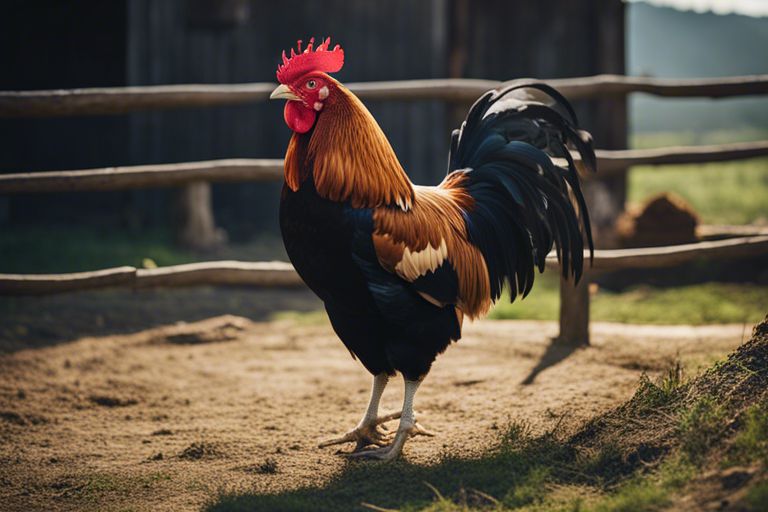
Health and Welfare Considerations
Nutrition and Its Impact on Behavior
Impact of nutrition on roosters’ behavior is profound. A well-balanced diet that includes the necessary vitamins, minerals, and proteins is crucial for maintaining optimal health and behavior in roosters. Deficiencies or excess of certain nutrients can lead to behavioral issues such as aggression, feather picking, or even decreased egg production in roosters. It is crucial to consult with a poultry nutritionist to ensure the diet meets the specific needs of your flock.
Recognizing and Addressing Stress in Roosters
Nutrition plays a vital role in managing stress levels in roosters. High-stress levels can result in various negative behaviors, including aggression, reduced egg production, and poor overall health. It is important to provide a safe and comfortable environment for roosters, ensuring access to proper nutrition, clean water, and adequate space. Additionally, implementing enrichment activities such as perches and toys can help reduce stress and enhance their overall welfare.
Recognizing and addressing stress in roosters is crucial for their overall well-being. Common signs of stress in roosters include feather picking, decreased appetite, increased vocalization, and aggression towards other flock members. It is crucial to identify and eliminate potential stressors in the environment, such as overcrowding, inadequate nutrition, or predator threats. Providing a stress-free environment and addressing any underlying issues promptly can greatly improve the health and welfare of your roosters.
Final Words
Following this comprehensive breakdown of rooster behavior, it is clear that understanding these fascinating creatures involves delving into their instinctual and hierarchical nature. From their crowing and territorial displays to their interactions with hens and flock dynamics, roosters exhibit a complex range of behaviors that reflect their role as guardians and leaders. By recognizing the cues and signals they display, we can better care for and interact with these magnificent birds, ensuring a harmonious coexistence in our shared spaces.
FAQ
Q: What factors influence rooster behavior?
A: Rooster behavior can be influenced by genetics, age, environment, social interactions, and the presence of predators or threats.
Q: How do roosters communicate with each other?
A: Roosters communicate using a combination of vocalizations, body language, and displays such as crowing, wing flapping, and strutting.
Q: What is the significance of a rooster’s crowing?
A: Crowing is a way for roosters to establish their territory, communicate with the flock, and assert their dominance within the group.
Q: How do roosters establish their pecking order?
A: Roosters establish their pecking order through displays of dominance and aggression, such as pecking, chasing, and challenging other roosters.
Q: Do roosters exhibit any protective behaviors?
A: Yes, roosters can exhibit protective behaviors towards their flock, alerting them to danger, and even putting themselves in harm’s way to defend the group.
Q: What should be done if a rooster becomes aggressive towards humans?
A: It is important to address aggressive behavior in roosters promptly by avoiding direct eye contact, using a barrier such as a broom or umbrella to keep them at a distance, and seeking advice from a poultry expert if the behavior persists.
Q: How can one effectively train and handle roosters?
A: Training and handling roosters require patience, consistency, and positive reinforcement. Establishing trust through gentle handling, respecting their boundaries, and using treats for rewards can help in training roosters effectively.
